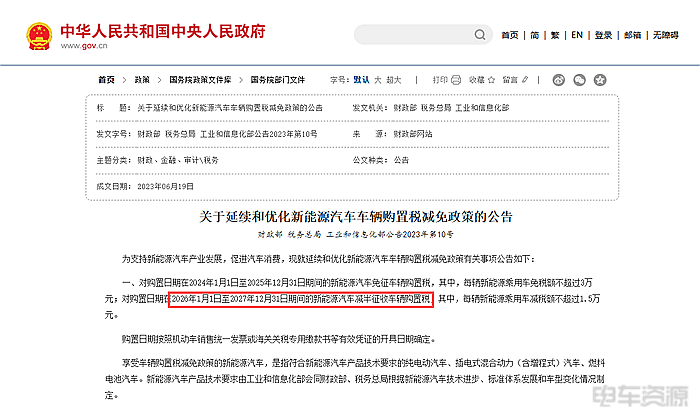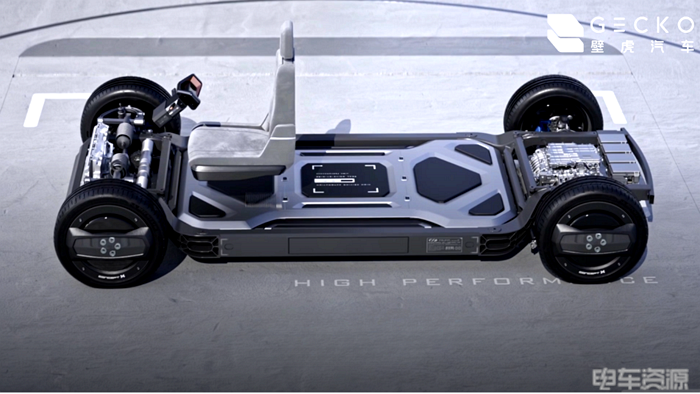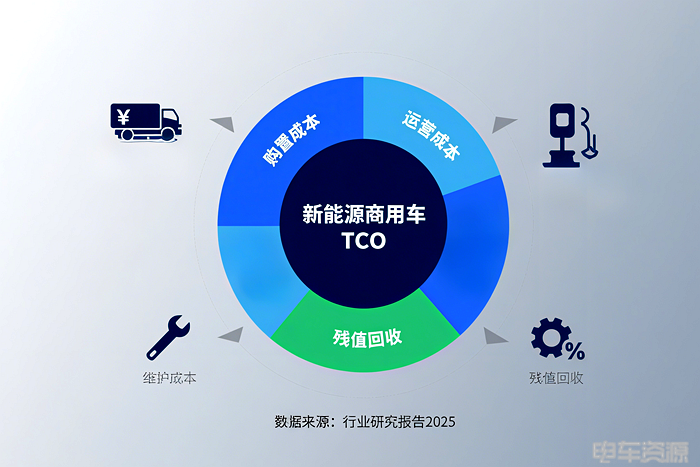Half Tax Reduction on Vehicle Purchase, 5% Price Increase, How to Reduce Costs for New Energy Logistics Vehicles?
In three months, that is, in 100 days, buying a new energy vehicle may become 5% more expensive! This is not alarmist talk, but a predetermined policy announced two years ago.
"From January 1, 2026, to December 31, 2027, vehicle purchase tax for new energy vehicles will be halved," and "Under the battery swap model, the purchase tax will be calculated based on the price of the vehicle excluding the battery." This presents a significant opportunity for swap-enabled models and battery separation modes. However, some industry insiders believe that most swap-enabled vehicles are concentrated in the heavy truck sector, while new energy logistics vehicles have more diverse application scenarios and demand. They argue that technology cost reduction is key for users to spend the least money to get the most suitable vehicle. In their view, the battery swap model is not the optimal solution.
"Purchase tax halved, how much more will it cost?"
On December 31, 2022, the national subsidies officially completed their historical mission of "helping new energy vehicles get on the horse and giving them a ride," and thus withdrew from the historical stage. The new energy vehicle industry, including new energy logistics vehicles, has entered a new development phase, transitioning from policy-driven to market-driven.
In the same year, the price of core raw material lithium carbonate for power batteries plummeted from a peak of 600,000 yuan per ton to a reasonable range below 200,000 yuan per ton. The price of power batteries also dropped significantly, accelerating the arrival of the "oil-electricity parity" era. Driven by the policy of (full electrification) for public domain vehicles, new energy vehicle companies rushed to compete for market share, but found themselves mired in intense internal competition.

In the first half of 2025, the penetration rate of new energy vehicles in China surpassed 50% for the first time, marking a shift in the industry from "incremental expansion" to "stock competition." New energy logistics vehicles, being the most economical in terms of Total Cost of Ownership (TCO) in the road transport market and the most aligned with the "dual-carbon" strategy, have a penetration rate of around 25%, indicating a vast market space in the stock market. Whether new energy logistics vehicle companies can succeed in the stock market competition depends crucially on their ability to reduce the initial vehicle ownership cost and the total lifecycle TCO cost for users.
The implementation of the new policy to halve the purchase tax on new energy vehicles will increase the vehicle purchase cost by 5%. Taking the best-selling mid-sized car as an example, assuming a price of 80,000 yuan, the purchase price on January 1, 2026, including the halved purchase tax, will be: 80,000 yuan + 80,000 yuan * 10% / 2 = 84,000 yuan. For the new energy logistics vehicle market, where insurance premiums are high and freight rates continue to decline, a price increase of 4,000 yuan is a significant burden for freight drivers.
Therefore, many industry insiders say that purchasing a vehicle before December 31, 2025, means saving money.
The optimal solution is to reduce costs and increase efficiency through total cost of ownership (TCO) over the entire lifecycle.
To alleviate the cost pressure of purchasing new energy vehicles caused by the vehicle purchase tax, the only viable strategy is to reduce costs and increase efficiency throughout the entire lifecycle, as the trend clearly indicates a phased implementation of the purchase tax for new energy vehicles.

Of course, this does not affect the market's optimism about the cost reduction in technology. The main reasons include but are not limited to: the leapfrog development of technology, the high integration of intelligent, modular, and platform-based components in new energy vehicles, which can achieve process cost reduction and efficiency improvement; manufacturers can significantly optimize production processes and yield rates through intelligent and fully automated production lines, thereby reducing production costs; intelligent configurations enhance the active safety performance of vehicles, greatly reducing collisions and lowering insurance and maintenance costs.
However, the true realization of cost reduction in technology relies on the large-scale application of vehicles. It is imperative to reduce the total cost of ownership (TCO) over the entire lifecycle of the vehicle.
Taking Gecko Auto as an example, the company uses an advanced digital chassis as its core, based on a strategic platform technology that is modular, digital, and ecological, leading the industry towards a more efficient, intelligent, and sustainable future. At the same time, through the technological leadership and resource advantages brought by its ecological layout, it continuously creates value, thereby achieving cost reduction and efficiency improvement throughout the entire vehicle lifecycle.

On one hand, a series of intelligent driving functions tailored for commercial vehicles significantly enhance the driving experience and active safety coefficient, greatly reducing the probability of vehicle collisions and thereby lowering insurance and maintenance costs. On the other hand, Geckor Auto's shareholders include leading enterprises from the upstream and downstream of the industrial ecosystem, enabling the maximization of cost reduction throughout the vehicle's entire lifecycle.
It should be noted that achieving cost reduction throughout the entire life cycle of new energy commercial vehicles is not an easy task, nor can it be accomplished by automotive companies alone. This requires the coordinated development of the upstream and downstream of the industry chain. Currently, OEMs hold a favorable position, and those who seize the initiative are likely to gain market dominance.
"From January 1, 2026, to December 31, 2027, vehicle purchase tax on new energy vehicles will be halved," the most direct impact of which is the increase in the purchase cost of new energy vehicles. In the current era of comprehensive competition, price reduction is the more pressing trend. For the new energy logistics vehicle industry, which is more sensitive to price, cost reduction and efficiency improvement are common needs across the entire industrial ecosystem. The battery swapping model may see short-term benefits due to relatively smaller price increases, but in the long run, technology-driven cost reduction is considered a better solution due to its potential for significant cost reduction over the entire lifecycle. Do you agree with this? Feel free to share and discuss in the comments section.
【Copyright and Disclaimer】The above information is collected and organized by PlastMatch. The copyright belongs to the original author. This article is reprinted for the purpose of providing more information, and it does not imply that PlastMatch endorses the views expressed in the article or guarantees its accuracy. If there are any errors in the source attribution or if your legitimate rights have been infringed, please contact us, and we will promptly correct or remove the content. If other media, websites, or individuals use the aforementioned content, they must clearly indicate the original source and origin of the work and assume legal responsibility on their own.
Most Popular
-

List Released! Mexico Announces 50% Tariff On 1,371 China Product Categories
-

EU Changes ELV Regulation Again: Recycled Plastic Content Dispute and Exclusion of Bio-Based Plastics
-

Case Study | Clariant AddWorks™ Additives Solve Plastic Yellowing Problem
-

Mexico officially imposes tariffs on 1,400 chinese products, with rates up to 50%
-

Wanhua Chemical Transforms Annual Production of 60,000 Tons PBAT Facility to Produce PETG






